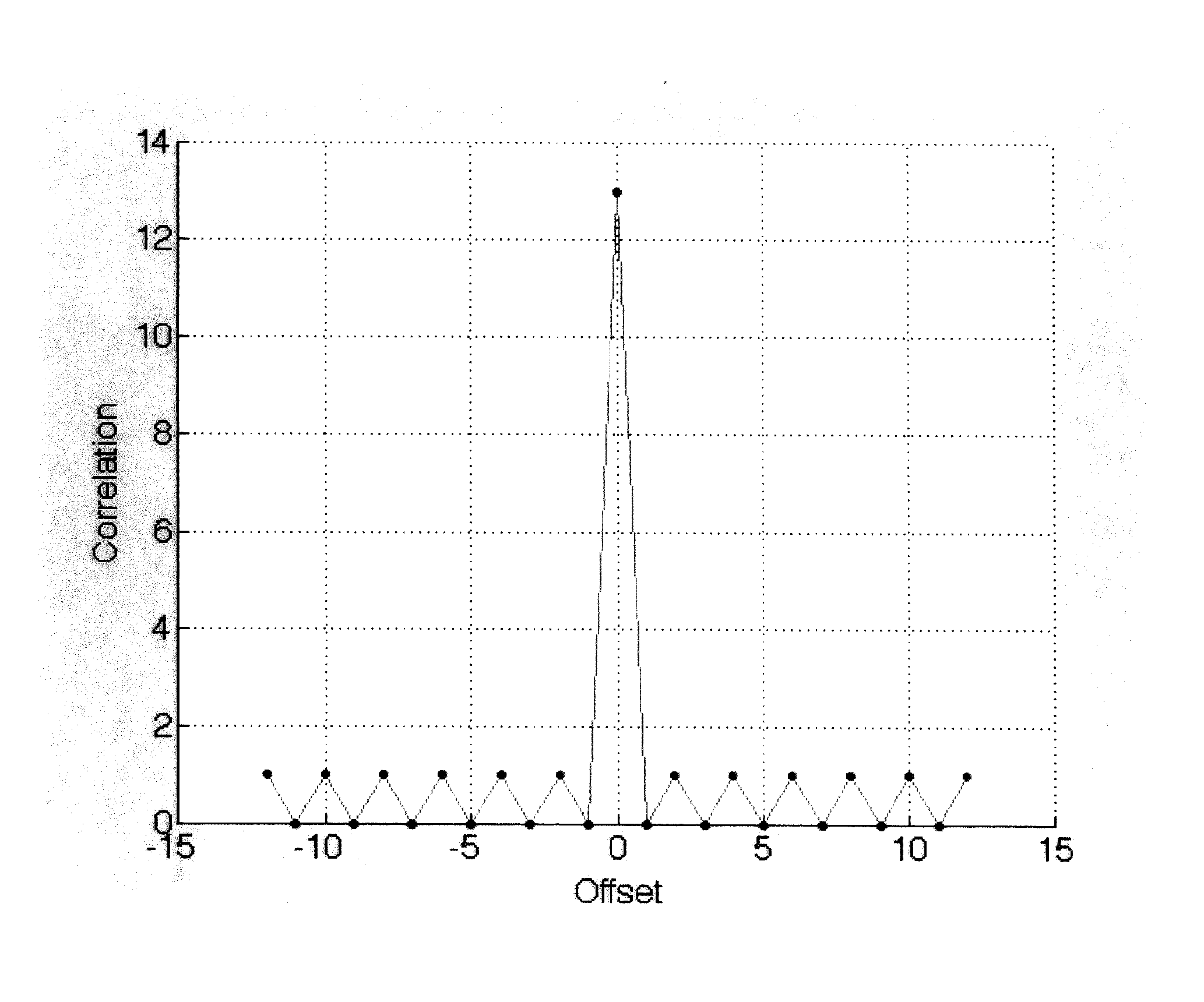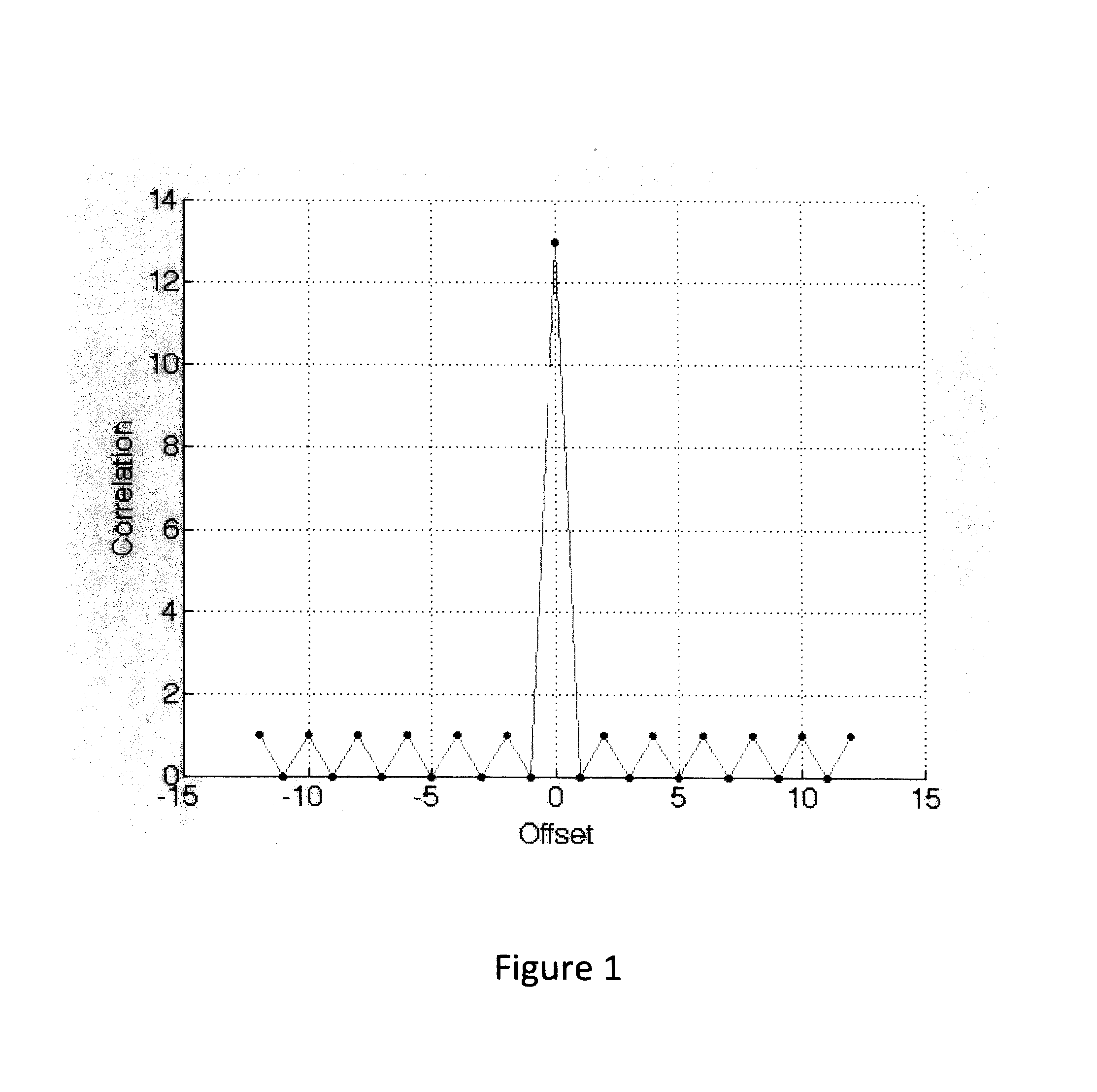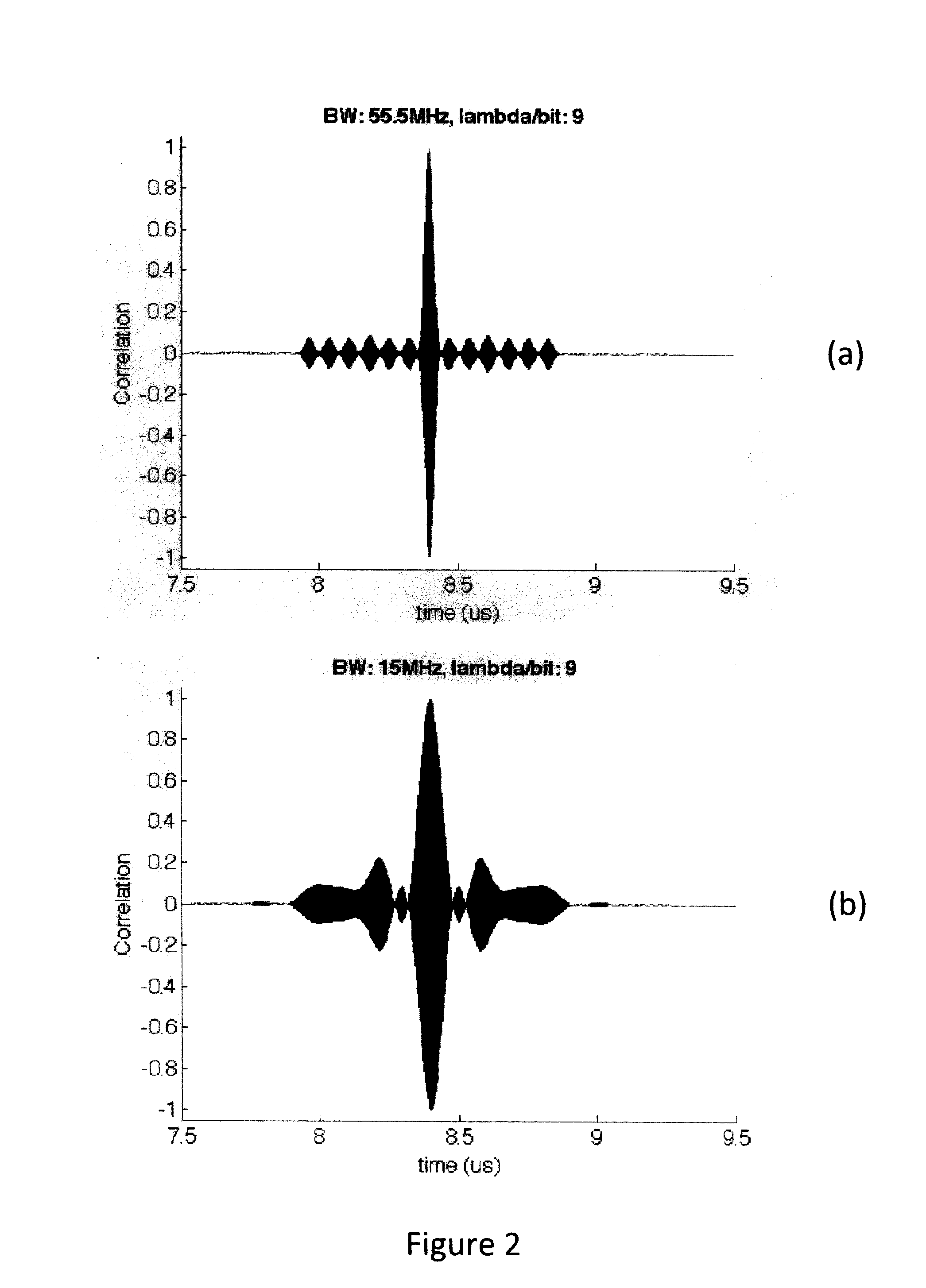Individually identifiable surface acoustic wave sensors, tags and systems
a surface acoustic wave and sensor technology, applied in the field of individual identifiable surface acoustic wave sensors, tags and systems, can solve the problems of limiting the number of sensor codes that will operate simultaneously, preventing the production of larger sets within commercially useful spectral bandwidths, and all prior coded correlation-based systems suffer from difficulties. , to achieve the effect of moderate interference and good auto-correlation properties
- Summary
- Abstract
- Description
- Claims
- Application Information
AI Technical Summary
Benefits of technology
Problems solved by technology
Method used
Image
Examples
Embodiment Construction
[0054]Embodiments of the present invention teach methods for developing sets of individually identifiable SAW sensor tag devices that operate well together, incorporating diversity techniques and codes that have good autocorrelation properties and low cross correlation properties over a desired time range, substantially reducing code collision interference problems.
[0055]A first embodiment of the present invention utilizes direct sequence spread spectrum (DSSS) coding combined with both time diversity and frequency diversity to construct sets of individually identifiable sensors or sensor-tags. DSSS coding is alternatively called BPSK (binary phase shift keying) or binary sequence coding. In this technique, a code consists of N bits, each taking on the value of either +1 or −1. The time length of the bit determines the bandwidth (BW) of the code in the frequency domain (the shorter a bit is in time, the wider the BW and vice versa). The SAW implementation of a DSSS code utilizes at ...
PUM
 Login to View More
Login to View More Abstract
Description
Claims
Application Information
 Login to View More
Login to View More - R&D
- Intellectual Property
- Life Sciences
- Materials
- Tech Scout
- Unparalleled Data Quality
- Higher Quality Content
- 60% Fewer Hallucinations
Browse by: Latest US Patents, China's latest patents, Technical Efficacy Thesaurus, Application Domain, Technology Topic, Popular Technical Reports.
© 2025 PatSnap. All rights reserved.Legal|Privacy policy|Modern Slavery Act Transparency Statement|Sitemap|About US| Contact US: help@patsnap.com



